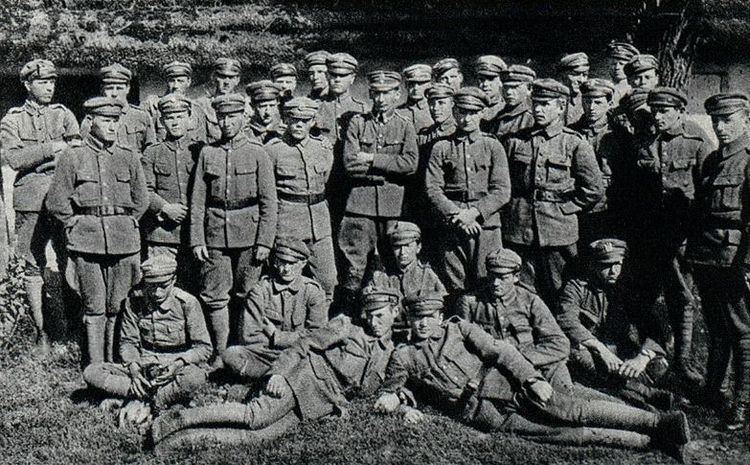 | ||
Similar Polish Legions in World War I, Polish Military Organisation, Polish I Corps in Russia, Border Protection Corps, Austro‑Hungarian Army | ||
Royal Polish Army contemptuously nicknamed die Polnische Wehrmacht by Imperial Germany (Polish: Polska Siła Zbrojna) was a military formation created during World War I in direct response to Piłsudski's refusal to swear an oath of allegiance to Germany. It was intended as the armed forces of a puppet Kingdom of Poland envisioned by the Prussian Mitteleuropa Plan. The results of the recruiting campaign were dismal. The Polska Siła Zbrojna was nevertheless established, as part of the German Army and under complete German command. The commander-in-chief of the Polska Siła Zbrojna became general-governor Hans Hartwig von Beseler, while the de facto commander was General der Infanterie Felix von Barth, head of the training branch.
The Polska Siła Zbrojna was created on 10 April 1917, as a result of the Act of November 5th of 1916 and the creation of Kingdom of Poland. The backbone of the formation were the soldiers of the Polish Legions, fighting together with the Austro-Hungarian Army against Russia.
As a result of the Oath Crisis of July 1917, most of the soldiers of the Polish Legions declined to pledge loyalty to the German Kaiser. Approximately 15,000 of them were confined in internment camps in Beniaminów and Szczypiorno, while almost 3,000 were drafted to the Austro-Hungarian Army. The planned force of 50,000 had only 2,775 soldiers, mostly untrained recruits from central Poland. After the command of the unit was transferred to the Polish Regency Council on 19 October 1918, the number soon reached 9,000. After Poland declared her independence on 11 November 1918, the Polnische Wehrmacht became the basis of the newly formed Polish Army.
